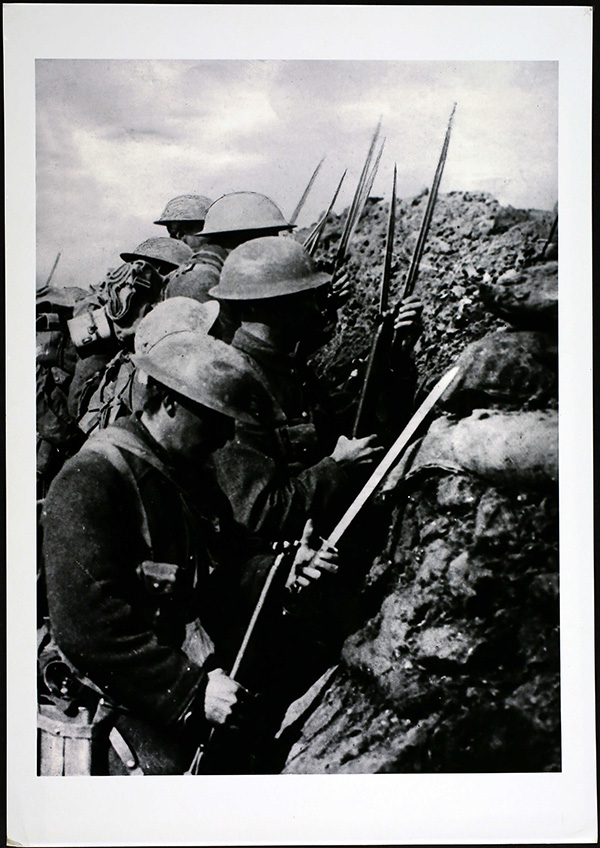The Battle of the Somme, the conflict will be remembered as one of the bloodiest wars in human history. The horrors of trench warfare resulted in thousands of soldiers ‘going over the top’ and dying in futile attacks against the enemy, epitomised by the Battle of the Somme. The 1st of July 1916 marked the start of the Battle of the Somme, but it continued until November 1916 and it was actually a long series of battles. Below we have outlined the main events that happened throughout July
First Phase: 1 – 17th July 1916 The Battle of Albert
The Battle of Albert is the beginning of the British and French offensive with the preparatory Artillery Bombardment beginning on 24th June and the Infantry attack on 1st July 1916. The Infantry attack is the common start date for the Battle of Albert. The British plan of attack was at first to bombard and capture the German first line of defence, bring up artillery then attack the second line of defence. General Sir Douglas Haig rejected this and pushed for a decisive breakthrough operation which he eventually got. The British would attack and capture both the first and second defence lines behind a “creeping” artillery barrage before pushing on to the Baupame area. However, the plan was poorly executed. The Divisional Artillery failed to keep to the planned tactics for the creeping barrage and instead of moving their shots forward at 50 yard increments every minute they chose instead to move 100 yards forward every 2 minutes. No Man’s Land in this section of the front was very short and thus the bombardment began on top of the German trenches then after two minutes moved beyond them exposing the advancing British Infantry to a recovered German Defence Force. The guns supporting XIII Corps abandoned the creeping barrage altogether, resulting in the 18th Infantry Division achieving little. The result of all this was that the British Army suffered the worst casualties in its’ history over a single day for a modest advance and capture of Mametz and Montauban. The few successes and lessons learnt from this day did not filter back to the British Command in any reasonable time, hence, the British were slow to exploit the capture of Memetz and Montauban. For the remainder of this battle the British carried out numerous small assaults while they digested the results of the first major attack. The strategic consequences of this battle did help to force the Germans to halt their attack on Verdun as was hoped for. However, disagreements between General Sir Douglas Haig and his French counterpart meant that the rest of the Somme offensive could scarcely be called a “Joint-Offensive”.
The Battle of Bazentin Ridge
The Battle of Bazentin Ridge was launched by the 4th Army on 14 July, the second phase of the Somme Offensive. The British again failed to exploit their advantage and gains and with the Germans stiffening their resistance, the battle ground down into a stalemate. The 4th Army plan was to advance into No Man’s Land under the cover of night, during a bombardment of the German lines. They would then lie in wait as close as possible to the German Defences ready to rush in as the bombardment lifted. Luckily, lots of little things played into the hands of the British. There was a greater concentration of British Guns focussed on a smaller section of the front and with a planned advance much smaller than that of the Battle of Albert. The attack went off without a hitch, the bombardment of the frontline German trenches started and the Infantry moved into position. After five minutes the bombardment lifted to the second German line and then again to hit the German Reserve line. The first wave of British Infantry, made up of bombing parties, went straight through to the reserve trenches. The following waves attacked the main line with varying degrees of success. In some places they caught the Germans in their dug outs, in others they had recovered quicker and met the British advance with rifle and machine gun fire. The Germans however, re-grouped quickly after the initial shock of the attack, and forgoing their own counter they were able to halt the very late British attempts to exploit their gains and take the position at High Wood. It would not be captured until the next major offensive.
Battle of Fromelles
To exploit any weakening of the German defences, during 19–20 July 1916, the Battle of Fromelles was a subsidiary attack to support the Fourth Army on the Somme 80 kilometres (50 miles) to the south. However, preparations were rushed, the troops were inexperienced in trench warfare and the power of the German defence was sorely underestimated and the attackers were outnumbered 2:1. Even though it had inflicted some losses on the German defenders, The Battle of Fromelles gained no ground and deflected few German troops bound for the Somme. The attack was the début of the Australian Imperial Force on the Western Front and it is believed that 5,533 losses were incurred by the 5th Australian Division; German losses were around 1,600–2,000, with 150 taken prisoner.
Were any of your relatives soldiers in the First World War?
Find out more about them and your family’s past by searching our vast range of records – Search Here >>


